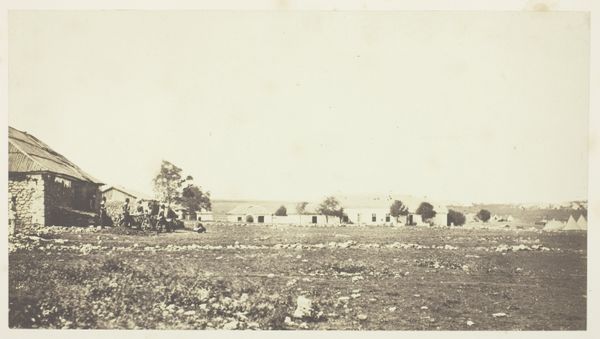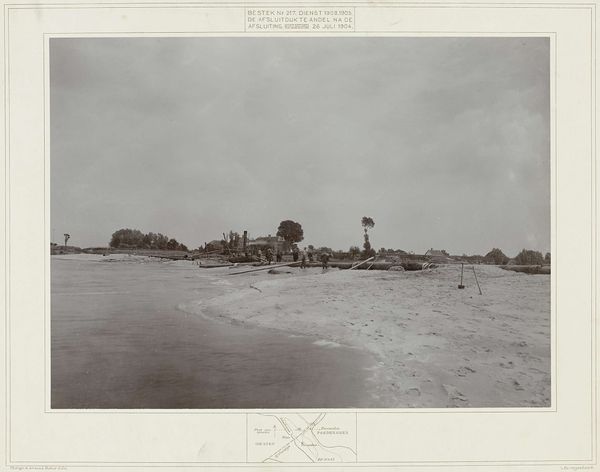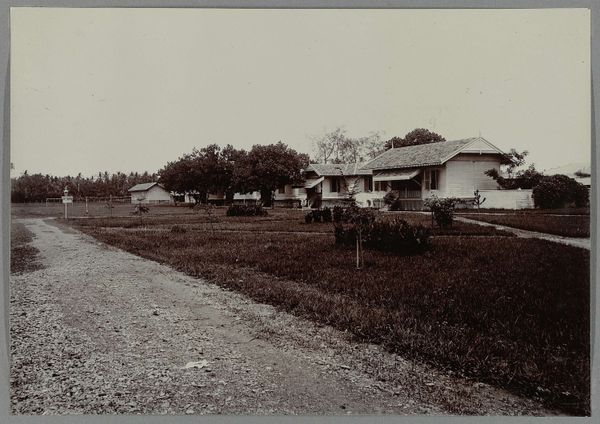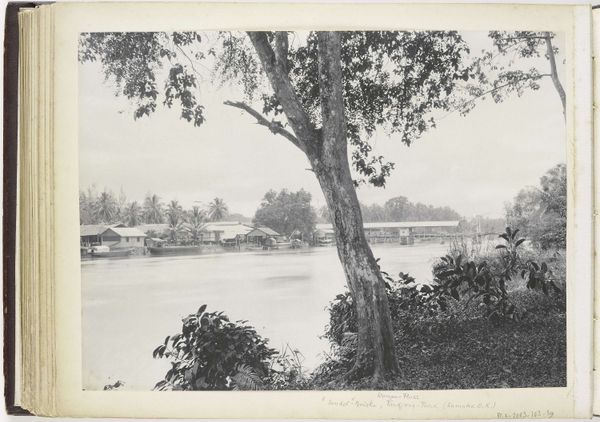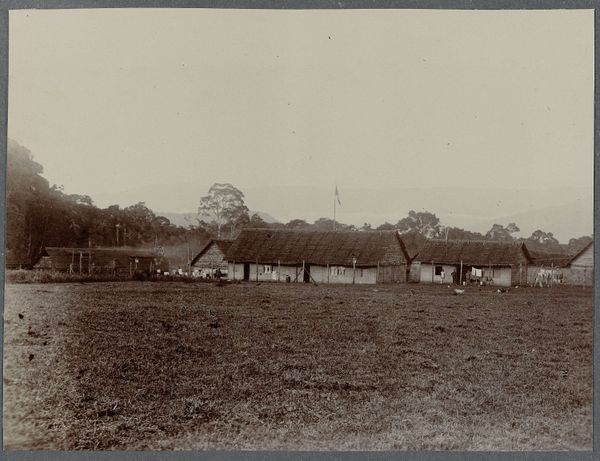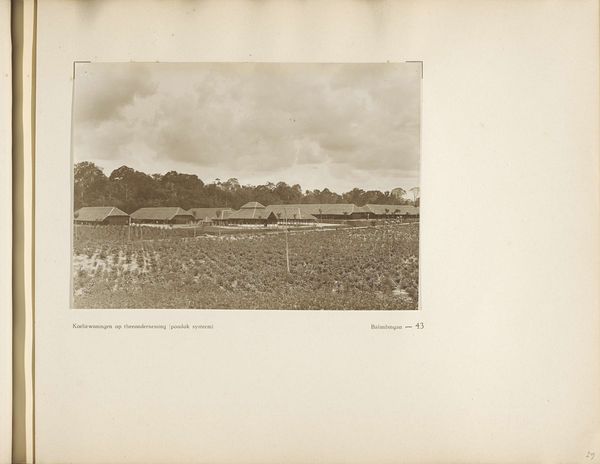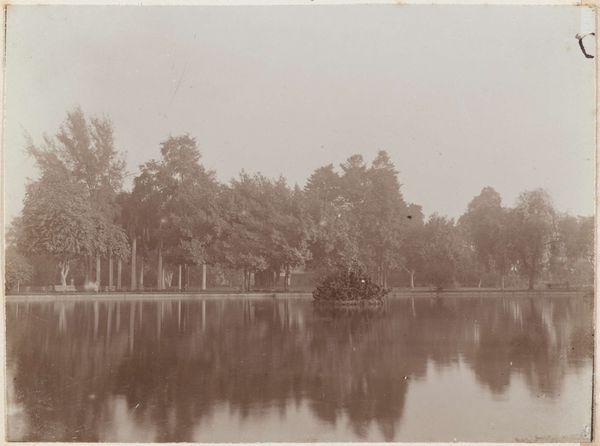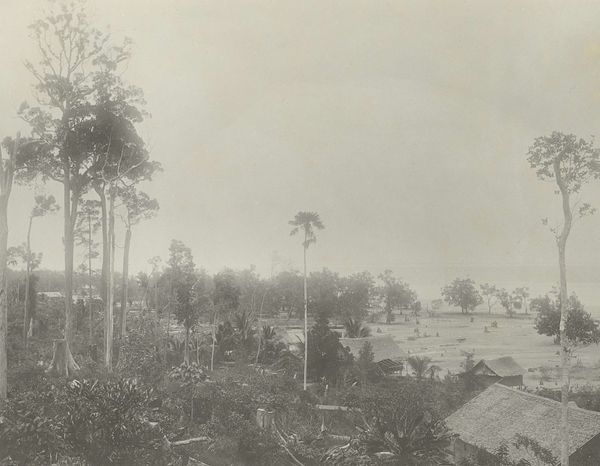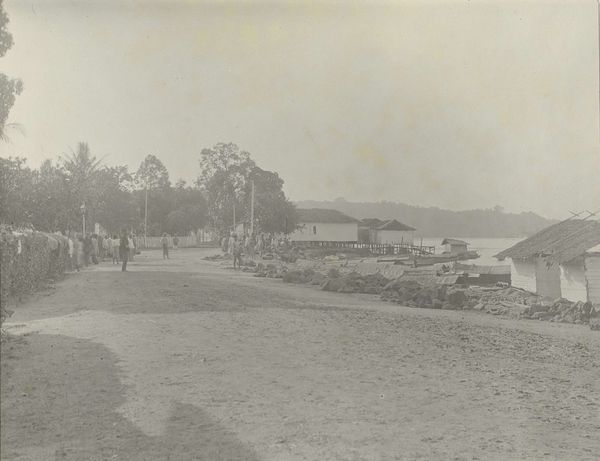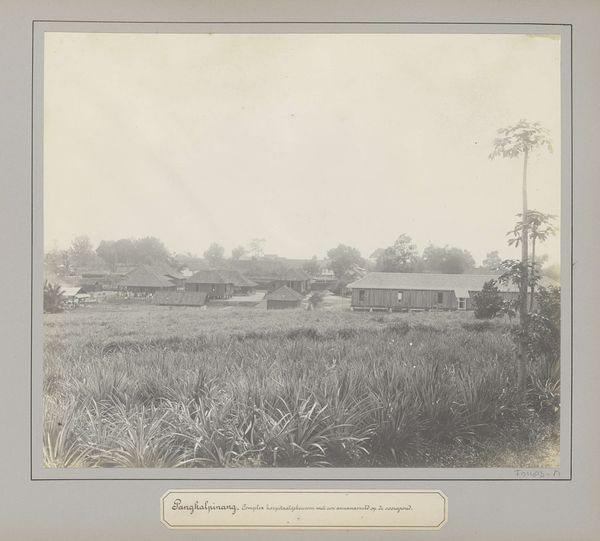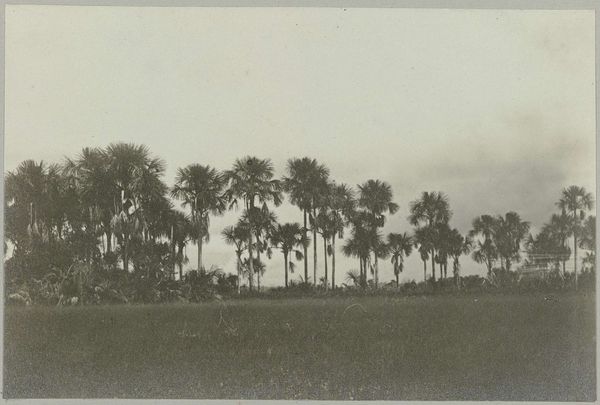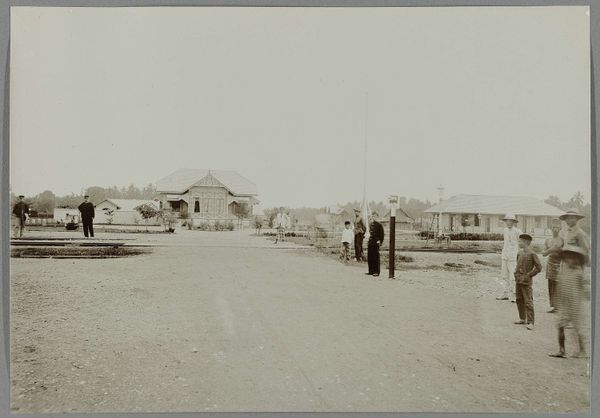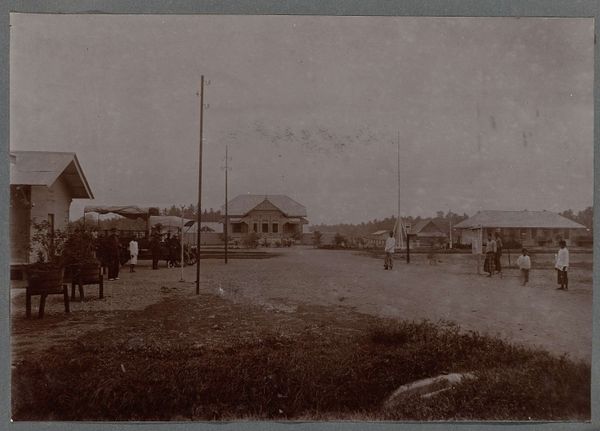
Dimensions: height 120 mm, width 162 mm
Copyright: Rijks Museum: Open Domain
Curator: Let's consider this photograph, "Hutjes in Suriname" by Jacob Evert Wesenhagen, created sometime between 1905 and 1910. Editor: There's such a subtle mood. The muted tones lend it a faded quality, almost like a half-forgotten memory. The composition draws my eye across the landscape, guided by that meandering body of water. Curator: Indeed. Observe how Wesenhagen manipulates the photographic medium to evoke atmosphere. The shallow depth of field flattens the picture plane, emphasizing tonal relationships over detailed representation. The print itself becomes a field of aesthetic contemplation. Editor: But what strikes me are these rudimentary structures; the huts. The rough, exposed material begs the question— what labor was involved in creating these homes? The construction would suggest a utilitarian necessity over refined architectural intention. It begs considerations around access, living standards, and perhaps exploitation. Curator: A relevant interpretation. However, note that regardless of social reality, the composition is carefully arranged, with the huts serving as visual anchors that play with ideas of horizontality and implied volume. It's about visual balance, lines, and subtle contrast, that gives this image strength. Editor: Balance and order perhaps mask deeper unrest. The seemingly artless arrangement of these buildings speaks to a very practical construction – each log placed to reinforce structure, but in a far wider scheme related to how laborers shaped this land in their struggle. Curator: Still, these huts, as subjects within Wesenhagen’s photograph, transform these utilitarian dwellings into abstract elements in a tonal composition. I find a captivating formal tension that invites repeated viewing, not just for their societal origins but for their spatial relationships within this particular composition. Editor: I concede the undeniable aesthetic draw. However, to appreciate "Hutjes in Suriname" fully, one must acknowledge that the allure springs directly from raw conditions under which lives are made – conditions we ought to further recognize and scrutinize. Curator: A fair point. Wesenhagen's image undeniably leaves room for a vast array of rich discussion and thought, formal or otherwise. Editor: Exactly; now where's the label printer?
Comments
No comments
Be the first to comment and join the conversation on the ultimate creative platform.
